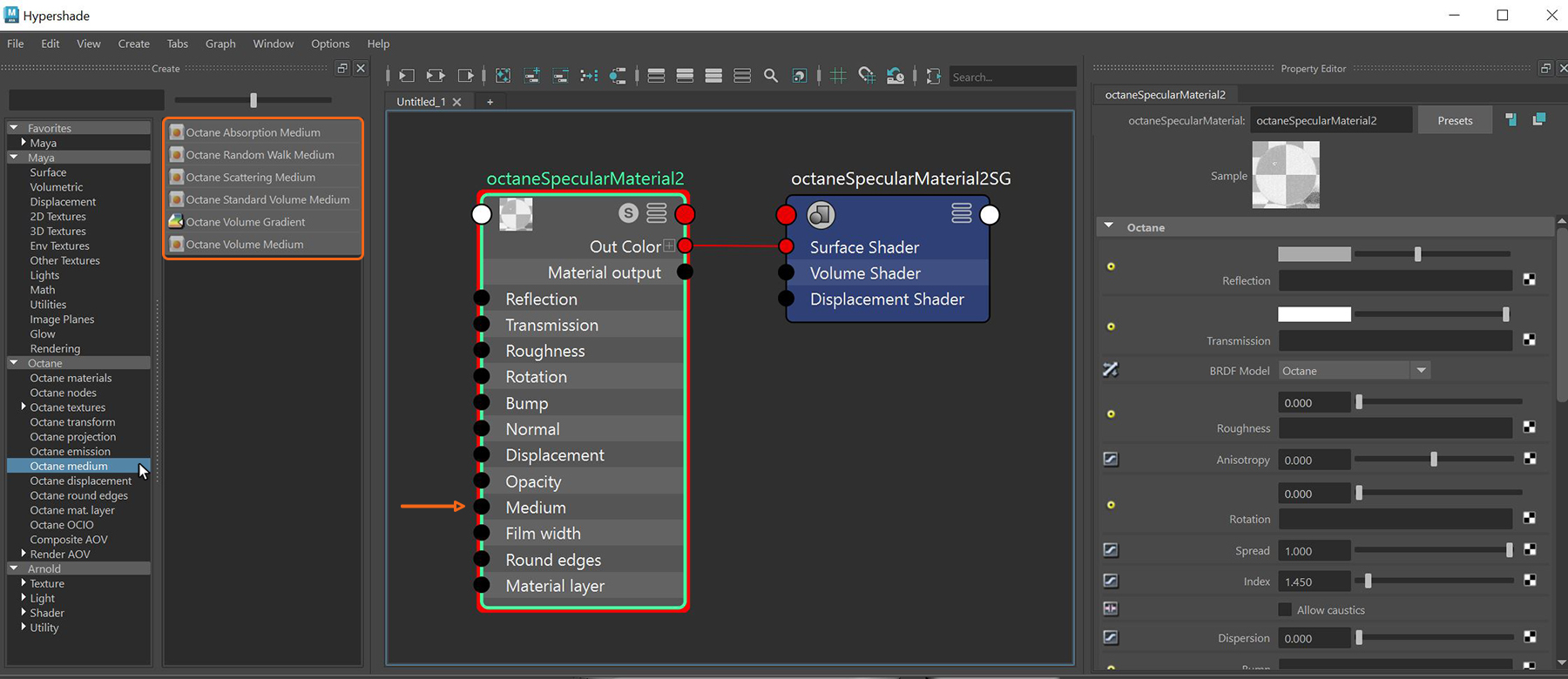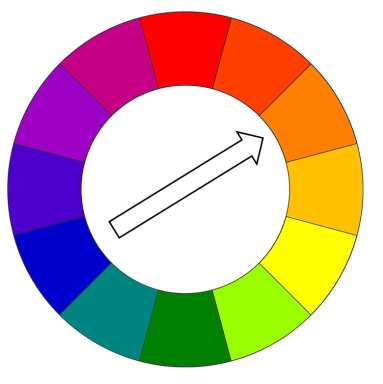
Octane supports participating media inside objects (absorption, subsurface scattering, and volume). These settings are stored in Medium nodes, which are attached to the corresponding input pins of DiffuseAmount of diffusion, or the reflection of light photons at different angles from an uneven or granular surface. Used for dull, non-reflecting materials or mesh emitters., SpecularAmount of specular reflection, or the mirror-like reflection of light photons at the same angle. Used for transparent materials such as glass and water., Universal, or Null material nodes.
There are five primary types of medium nodes:
To render with medium nodes, the Path Tracing or PMC render kernels are the best choices. It is possible to render mediums using the Direct Light kernel, but the results are not as accurate.
The medium nodes are found in the Medium section of the Octane MaterialThe representation of the surface or volume properties of an object. window. These nodes connect to the Diffuse, Specular, and Universal materials using their respective Medium slots (figure 1).

Figure 1: Medium nodes are found in the Octane section of the Hypershade’s Create node window
Medium nodes should be added to materials that are applied to meshes that define a closed volume. A single-sided plane will not work - for example, a plane representing a leaf will not work properly if a material has a medium is applied to it. The one exception is a plane representing the ground. Octane treats the ground plane as an infinite, deep surface.
Specular and Universal materials are the best choice when using a medium node. For both material types, activating the Fake Shadows attribute helps to lighten the overall transparency effect.
In the physical world, if the Absorption attribute use a color, the light transmitted through the surface is shaded as the complementary color (e.g., if the absorption is set to yellow, the transmitted light is bluish). Note: By default, Invert Absorption is active in the Absorption and Scattering nodes which will make the these real-world physical characteristics behave in an opposite fashion.

Figure 3 : A diagram shows that complementary colors are opposite each other on the color wheel